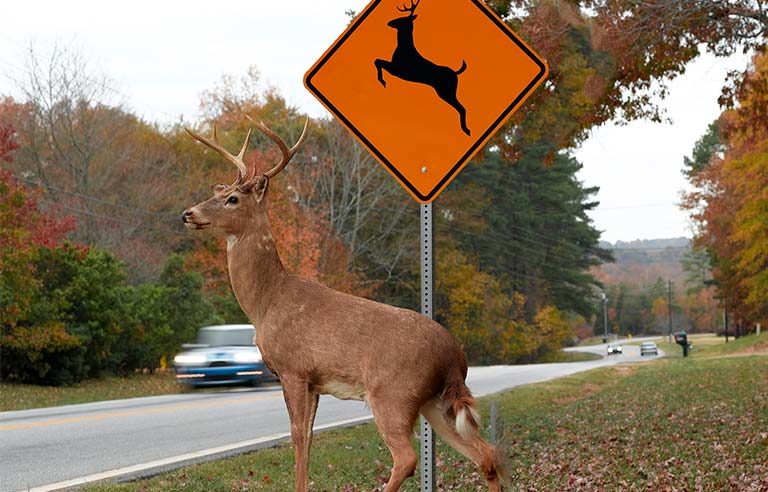Steer clear of deer
Tips for avoiding collisions

On your early morning drive to work, a deer pokes its head out from the trees along the roadside. The actions you take next will determine not only your own safety, but that of the animal and possibly other motorists.
Around 1.5 million deer-vehicle collisions occur each year on the nation’s roadways, estimates the Humane Society of the United States. How can you avoid becoming part of that statistic?
“The easiest way to avoid a collision is to not be distracted or impaired while driving,” Michigan State Police Sgt. Kim Vetter says. “That means paying attention to the roadway, keeping your eyes on the road, and not being distracted by devices in the car or other occupants.”
Here’s what else you should know about encountering deer while driving.
Activity tracker
Although some are on the move at night, deer are most active at dawn and dusk, says Moriah Boggess, a deer biologist with the Indiana Department of Natural Resources Division of Fish and Wildlife.
“They’re getting up for the day and they’re settling in for the night,” Boggess said. When it comes to collisions, however, the most dangerous time on the road is during the deer breeding season, commonly known as “the rut.”
“They are moving around a lot more at that time of year,” Boggess said, “so much so that scientists can use that collision rate to determine when deer breeding is occurring in an area.”
The timing varies by region. In the Midwest and along the East Coast, breeding takes place from mid-October through the end of November. “Down in Florida, deer are breeding in late July or August, and all the way until February in Alabama and some parts of Mississippi,” Boggess said.
Do you know the peak times of deer breeding in your area? The website of your state’s department of natural resources or fish and wildlife agency is a great resource.
Roaming together
If you see a deer near the road, more are likely to follow. Deer don’t travel alone.
“Oftentimes, a motorist will hit a deer after they’ve seen another,” he said. “Deer are often confused. They don’t necessarily understand the direction of travel or what’s happening on that road. They’re prone to quick movements and maybe running in a new direction because they’re frightened.”
A common scenario during the breeding season is when a female, known as a doe, crosses a road and is followed by a buck. When you get behind the wheel, Vetter wants you to remember: “Deer live here all the time, and they move all the time.”
Post a comment to this article
Safety+Health welcomes comments that promote respectful dialogue. Please stay on topic. Comments that contain personal attacks, profanity or abusive language – or those aggressively promoting products or services – will be removed. We reserve the right to determine which comments violate our comment policy. (Anonymous comments are welcome; merely skip the “name” field in the comment box. An email address is required but will not be included with your comment.)
